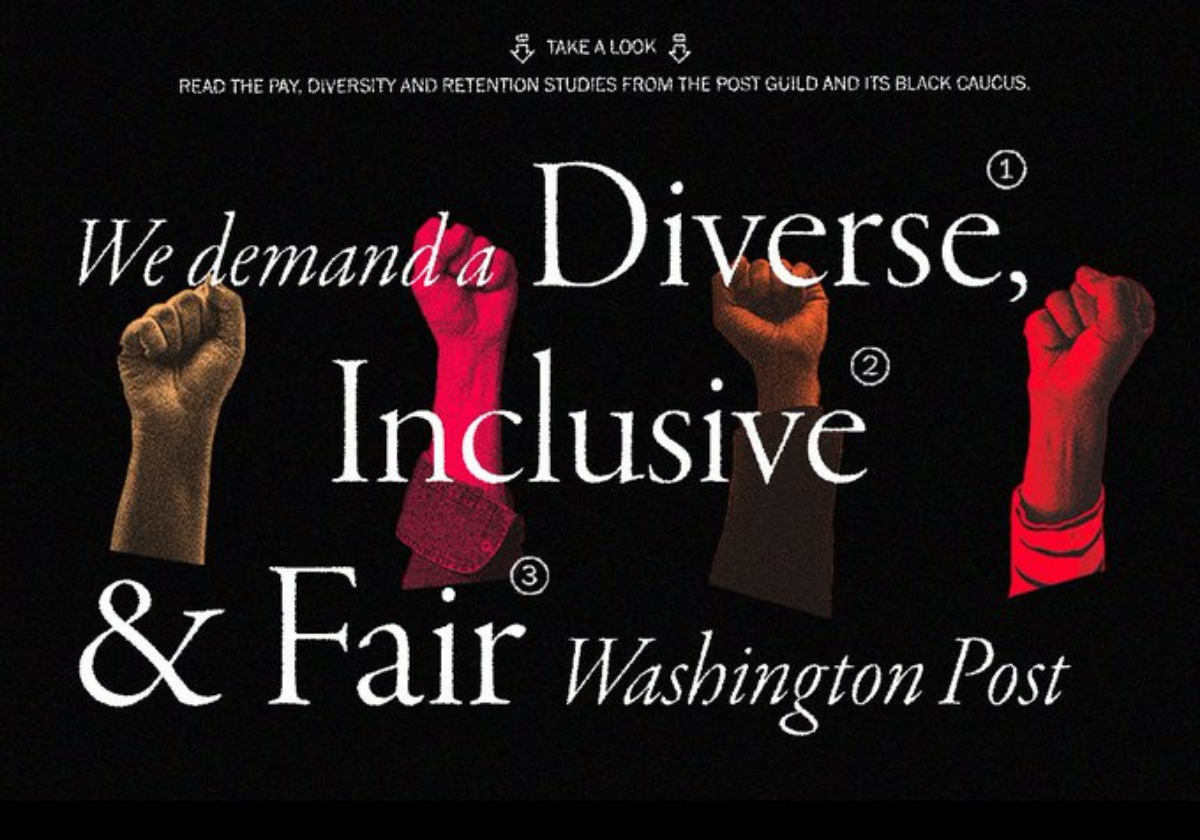Study finds “The Washington Post still operates with systems that perpetuate inequalities.”
After almost two years of work by a team of dedicated union members, the Post Guild’s 2022 Pay, Diversity and Retention Study and Black Caucus testimonial report were released Wednesday.
These reports build upon work the Guild presented in its 2019 pay study, with additional data, striking testimonials and detailed analysis that support a growing concern shared across employees at the company: The Washington Post still operates with systems that perpetuate inequalities.
Our data analysis found that:
- Women and people of color are still paid far less compared with their male and White colleagues.
- As of 2021, the median salary for Guild-covered women across the company was 13 percent lower than that for Guild-covered men.
- The median salary for White employees in the Newsroom division was nearly 16 percent more than that for employees of color.
- Though the company seems to be making a concerted effort to hire more people of color, it is not retaining them.
- In 2016, Black employees made up 25 percent of the total workforce. By 2021, that figure had fallen to 18.8 percent. Black leadership also decreased — from 20 percent in 2016 to 15.9 percent in 2021.
We gathered testimonials from dozens of current and former employees. Here are a few excerpts:
- In August 2020, a group of Black workers in the Commercial division wrote a letter to Publisher Fred Ryan describing instances of racism, discrimination and inequality in their departments. It began: “Did you know that in the Accounting and Finance departments of The Washington Post, the commercial side of the organization is referred to as ‘The Plantation,’ because many of the workers are Black and being overseen by White bosses?”
- One female reporter who left The Post said she was routinely discouraged from pursuing high-profile stories — those were given to colleagues who were disproportionately White and male: “Early on, someone explained to me that part of it was just the A1 system.”
- One veteran Post journalist spoke about the obstacles Black managers face while trying to move up in the company, mentioning that after she had proved herself as a leader, “winning awards and generally standing out, it became clear to me that I was expected to remain in the same job indefinitely without complaint.”
The full report includes:
- A comprehensive analysis of pay and retention among Guild-covered employees
- An interactive visualization of median salaries by race, age and gender
- Testimonials from both Newsroom and Commercial employees
- A report from the Black Caucus highlighting systemic inequities
- Our recommendations to the company
- An explanation of the methodology we used
Earlier this week, Guild representatives presented topline findings from the report to company management. The company declined to comment. Still, we are prepared and eager to work alongside the company to reform the systems that create pay disparities, to make our staff and leadership more diverse, to better invest in and retain talent — to do all it takes to ensure that The Washington Post is an industry leader in journalism and in workplace equity.

